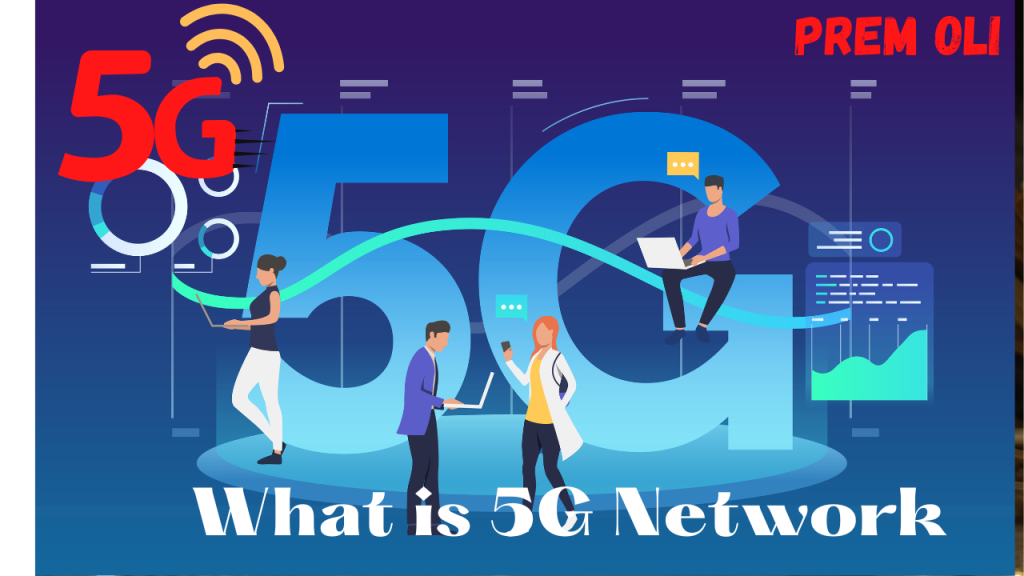5G is the fifth generation of cellular network technology, and it is the successor to 4G (LTE). It is designed to provide faster internet speeds, lower latency, and more capacity than previous generations of cellular networks. The main objective of 5G network is to provide a stable and fast internet connection to support the growing number of devices, including smartphones, tablets, and IoT devices, that are connecting to cellular networks.
5G networks use a variety of different frequencies, including low-band, mid-band, and high-band spectrum, to provide improved coverage and capacity. Low-band spectrum provides widespread coverage but lower speeds, while high-band spectrum provides faster speeds but limited coverage. Mid-band spectrum offers a balance between coverage and speed.
5G networks also use advanced technologies such as beamforming and massive MIMO to improve capacity and reduce interference. Beamforming is a technique that uses multiple antennas to direct a signal towards a specific device, while massive MIMO (multiple input, multiple output) uses many antennas at the base station to improve the efficiency of wireless transmissions.
5G networks are expected to provide faster download and upload speeds than 4G networks, with peak speeds of up to 20 Gbps. Latency, or the time it takes for a device to receive a response after sending a request, is also expected to be significantly lower in 5G networks, at around 1 ms.
5G networks are being deployed in many countries and are expected to be more widely available in the next few years. With 5G networks, it will enable new use cases such as the deployment of autonomous vehicles, virtual reality and augmented reality, and many more.

How it Differ from 4G
5G and 4G (LTE) are similar in that they both provide cellular network connectivity, but there are several key differences between the two.
Speed: One of the main differences between 5G and 4G is speed. 5G networks are designed to provide much faster internet speeds than 4G networks, with peak speeds of up to 20 Gbps, while 4G networks typically have peak speeds of around 1 Gbps.
Latency: Latency, or the time it takes for a device to receive a response after sending a request, is also expected to be significantly lower in 5G networks at around 1 ms, compared to around 50 ms in 4G networks.
Frequency: 5G networks use a variety of different frequencies, including low-band, mid-band, and high-band spectrum, to provide improved coverage and capacity. 4G networks mainly use low and high-band spectrum, while 5G networks add mid-band spectrum as well.
Capacity: 5G networks use advanced technologies such as beamforming and massive MIMO to improve capacity and reduce interference. 4G networks use MIMO (multiple input, multiple output) technology but not as advanced as 5G.
Applications: 5G networks are expected to support a wide range of new applications and use cases, such as autonomous vehicles, virtual reality, and augmented reality, which require high-speed, low-latency connectivity. 4G networks are mainly designed for smartphones and other mobile devices.
Connectivity: 5G networks are expected to provide much better connectivity for a large number of devices, including smartphones, tablets, and IoT devices, which is essential to support the growing number of connected devices. 4G networks are mainly designed for smartphones and other mobile devices.
Also Read: Different between iphone14 and iphone13
What is MIMO?
MIMO stands for “multiple input, multiple output” and is a technology used in wireless communication systems to improve performance and increase capacity. It does this by using multiple antennas at both the transmitter (base station) and the receiver (mobile device) to create multiple parallel channels for data transmission.
In a MIMO system, the base station can transmit the same data to multiple devices at the same time using different antennas, which can increase capacity and improve signal quality. The mobile device can also receive data from multiple antennas at the base station, which can improve the reliability of the connection and reduce the effects of interference.
There are different types of MIMO configurations, such as single-user MIMO (SU-MIMO) and multi-user MIMO (MU-MIMO). SU-MIMO is used in 4G networks, where a single user device communicates with a base station using multiple antennas. MU-MIMO, on the other hand, is used in 5G networks, where multiple user devices communicate with a base station using multiple antennas simultaneously, which can further increase capacity.
MIMO technology is a key component of many wireless communication systems, including cellular networks, Wi-Fi networks, and satellite communications. By using multiple antennas at both the transmitter and receiver, MIMO systems can provide improved performance, increased capacity, and better signal quality.
